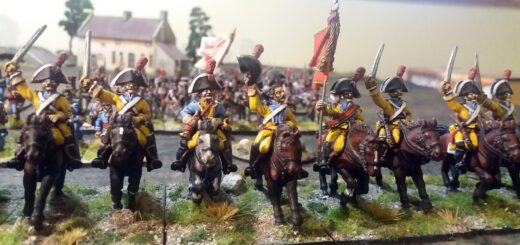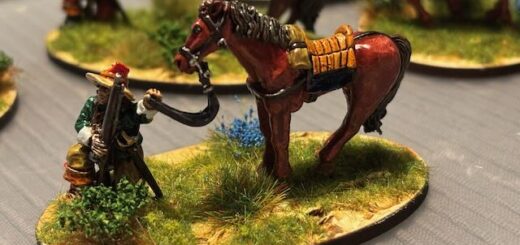US late war tank allocations
I have asked to the TOEs group about late war US tank allocations, since I am preparing a Spearhead US Infantry and tank divisions.
From Mark Bevis, author of the renown Micromark lists, the text below, many thanks!
IIRC (and yet again I can’t locate my file documenting it) the US Third Army contracted with French steel firms to produce 108 “Ersatz Jumbos” in January 1945, with delivery in February. It was intended to allocate 36 each to the 4th, 6th and 10th AD. As applique armor, but apparently factory installed with some control over the plate quality, these were probably not quite as well protected as the true Jumbos. It appears that many, if not all of these were converted from 76mm armed Shermans.
There were also a large – but unknown – number of field conversions done by army and divisional heavy ordnance maintenance units. Photos such as have been posted here document some of those conversions. It appears that units in First, Third and Ninth Army all converted Shermans to these standards, some using armor from scrapped Shermans, some armor from scrapped German tanks (Panthers were a favorite) and some from other materials, such as reinforced concrete. As such the quality of the conversions probably varied considerably, in particular in the armor taken from scrapped tanks where the plate may have been subjected to high heat or other hits and even partial penetrations affecting the armor quality.
Finally, here is my last notes regarding the true Jumbos, from my work in progress. Note that although 254 were built, only 250 (or possibly 252) were shipped to the ETO. So it is a little unclear if the remaining 2 or 4 stayed in the US or remained “unaccounted for.” Which makes one wonder if there is some old GI somewhere (or possibly a French or Belgian dockyard worker
) with an M4A3E2 in shipping condition parked in his garage?
Hope this helps answer some questions.
The M4A3E2 Jumbo in the ETO. This information is taking from a number of sources including: the Armored Fighting Vehicle and Weapons Section of the US Forces in the European Theater of Operations (USFET), the Armored Section of the US 12th Army Group, the Armored Section of the US First Army, and the Armored Section of the US Third Army.
In January 1944 the War Department offered the M4A3E2 “Jumbo” to fill the ETO request for the T26 Medium-Heavy Tank (as it was referred to in the message traffic I have examined). The offer was accepted by the ETO and preparations were made to ship the vehicles.
On 14 August it was noted that 115 were at the embarkation port (Boston or New York) and were loading or preparing to load on board convoys to Britain. At the same time there were 135 in the CONUS authorized on release for shipment to the ETO. However, a memo of 10 September remarks that the first 12 were not shipped until sometime prior to 24 August, an additional 29 had “been floated” between 24-30 August, 35 between 30 August and 2 September, 48 between 2-5 September, and 84 between 4-8 September, a total of 208. All of these were expected to arrive in UK waters between 8-15 September. In addition, 11 were at the port waiting to load, 28 were en route to the port, 5 were processing at CONUS depots, and 2 were canceled as unavailable. There is no explanation for the cancellation, they were probably retained in the US for further testing and evaluation or may have been so worn out by previous testing as to have been written off.
The first shipment of 128 (another memo cites the number as 126) arrived at Cherbourg and began unloading sometime on or before 22 September 1944. The whereabouts of the remaining 80 (or 82) presumably shipped to that date are not remarked.
By 14 October 36 had been received by the First Army. They were issued 15 each to the 743rd and 745th Tank Battalion’s and 6 to the 746th Tank Battalion. It appears that 9 more were received and issued to the 746th by 9 November, giving each battalion 15 and the First Army at least 45 on that date. By 18 October it was noted in a visit to the beach depots that they had 17 on hand, 24 released to the armies and 19 en route to Third Army for a total of 60. On 20 October, it was noted that 99 were on hand with the troops. That implies that 140 had been unloaded on the continent (counting the 17 on hand and 24 released at the depots, but not counting the 19 en route to Third Army – which evidently were counted as “with the troops” whether or not they had actually arrived). Note that the total unloaded was 68 fewer than the 208 noted as being “afloat” over a month prior and only 12 more than what had been unloaded on 22 September. It is evident that shipping and unloading priorities for the Jumbo were in practice somewhat low. On 24 October the allocation for the delivery of the Jumbo was confirmed as lots of 15 each until the following was achieved: First Army 105, Third Army 90, and Ninth Army 60. Why they planned for 255 when only 250 were being shipped is unclear, the USFET may have been under the impression that more were to be manufactured in the US, an error that apparently persisted into April 1945.
On 5 November it was noted that 180 were in the theater. However, on 10 November 1944 it was noted that 118 had been delivered to the armies and that 26 were in depots or were unloading, implying that a total of 144 had arrived, only 16 more than on 22 September. On 22 November, 40 were reported as having been issued to Third Army units. Five each were issued to the 10th AD, 702nd, 712th, 735th, and, 761st Tank Battalions, and 15 to the 737th Tank Battalion. On 28 November 154 were on hand, 4 were en route from ETO ports to depots and 55 were afloat in ETO waters for a total of 213. Note that this is only 5 more than the 208 that had been noted as being “afloat” by 8 September.
On 3 December 1944 a clearer picture was given. A total of 250 had arrived in the ETO of which it was noted that 10 had been destroyed in combat (in fact 14 had been destroyed to 28 November and 17 to 5 December). There were 40 with the First Army (which had lost 6 to 28 November and 8 to 5 December), 59 with the Third Army (5 had been lost to 25 November and 6 to 2 December), and 30 with the Ninth Army (3 had been lost to 28 November), a total of 129. En route were 14 to the First Army, 5 to Third Army, and 6 to Ninth Army, a total of 25. En route to ETO depots from the ports and unallocated to the armies were an additional 28. Afloat in ETO waters, but as yet unloaded, were 46. Finally, it was remarked that 12 were unaccounted for, either unloaded, but unreported, or simply unaccounted for. This is the last information on shipments to the Continent and appears to account for all 252 shipped (or 250).
By 22 February 1945 the First Army reported losing 22 Jumbos, in fact the weekly reports indicate that 24 had been lost. As of that date Third Army had lost 8 and Ninth Army had lost 6. An additional 5 were lost by First Army, 3 by Third Army, and 15 by Ninth Army prior to the end of the war.
Tank units in the ETO with Jumbos on hand (the assignment of units to armies is as of mid December). This listing appears to account for all units issued with the Jumbo.
First Army
3rd AD 6 (16 Dec)
5th AD 3 (19 Dec)
70th TkBn 4 (11 Feb)
743rd TkBn 15 (14 Oct, 3 lost as of 3 Dec)
745th TkBn 15 (14 Oct), 1 (15 Dec)
746th TkBn 6 (14 Oct), 15 (by 9 Nov), 5 (21 Dec) Lost 6 in March 1945
774th TkBn 10 (16 Dec)
The 70th Tank Battalion’s tanks were in very poor condition in mid December. Unit diaries note that they were all “original issue” and worn out. Thus it appears that the Jumbos assigned to the 70th Tank Battalion may have been from some of the last available. These units account for about 37 in mid December and a total of 22 were lost to 28 January. That total of 59 is very similar to the 54 on hand and en route as of 3 December. It is likely that all 40-odd of the remaining 105 allocated to the First Army were utilized as replacements and to equip the 70th Tank Battalion.
Third Army
4th AD 20 (22 Dec)
6th AD 11 (29 Dec, this may include the 5 reported en route on 3 December)
10th AD 5 (22 Nov)
702nd Tk Bn 5 (22 Nov), 5 (29 Jan)
712th Tk Bn 5 (22 Nov), 1 (11 Feb)
735th Tk Bn 5 (22 Nov), 2 (12 Feb)
737th Tk Bn 15 (22 Nov), 5 (15 Dec), 3 (29 Jan)
761st Tk Bn 5 (22 Nov)
The available reports tend to indicate that this is a fairly accurate picture of all the Jumbos assigned to the Third Army. By mid December some 68 may be accounted for including 7 that had been lost. This closely matches the 59 on hand and 5 en route count for 3 December. It may also be concluded that 10 were probably withdrawn from the 737th Tank Battalion prior to 15 December and were assigned to the 4th (or less likely 6th) AD. The remaining 30-odd allocated to the Third Army were probably utilized as replacements in these units during 1945.
Ninth Army
709th Tk Bn 1 (19 Dec)
747th Tk Bn 5 (27 Nov, plus 10 en route)
778th Tk Bn 4 (27 Jan)
This appears to account for only 20 of the 36 on hand or en route as of 3 December. Three had been lost to that date and another was lost between 21-28 December. The remaining 12 or 13 may have been issued later (likely to the 709th Tk Bn), may have been issued to other units (possibly the 3rd AD), or they may have been retained as replacements. It appears probable that the remaining 24 of the 60 allocated to the Ninth Army were never in fact shipped, given the strategic situation in mid December, the losses sustained to date, and the reduction in the number shipped from 254 to 250.
It does not appear as if the 2nd, 7th-14th, 16th, or 20th Armored Divisions were ever issued Jumbos.



